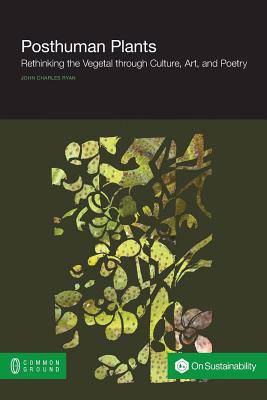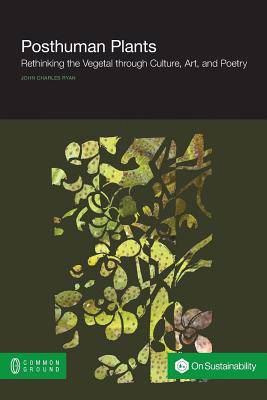
- Retrait gratuit dans votre magasin Club
- 7.000.000 titres dans notre catalogue
- Payer en toute sécurité
- Toujours un magasin près de chez vous
- Retrait gratuit dans votre magasin Club
- 7.000.0000 titres dans notre catalogue
- Payer en toute sécurité
- Toujours un magasin près de chez vous
Posthuman Plants
Rethinking the Vegetal through Culture, Art, and Poetry
John Charles Ryan
Livre broché | Anglais
76,45 €
+ 152 points
Description
Our interdependence with plants entails symbiosis that is not only biological but also cultural, social, and linguistic. Posthuman Plants addresses our diverse entanglements with plants in everyday life through the prisms of posthumanist, multispecies, ecocritical, and ecocultural theory. This volume asks: how does the reconfiguration of human "being" as inherently permeable affect our perceptions of and relationships to plants-those "others" that have been regarded historically as passive elements of the landscape and constructed as the mute foils of animality? This book contributes to the ever-increasing debate about how we perceive plants and their influence on what it means to be human, more-than-human, and other-than-human. It argues that reconceptualizing the botanical world requires seeing, feeling, and understanding plants as intelligent, active, and sentient agents. Posthuman Plants is divided into five sections: Affect and Reciprocity, Heritage and Digitality, Art and Vegetality, Poetry and Vegetality, and Plants and the Senses. Although some of its content is strongly focused on the vegetal life of the southwest of Australia where the author resides, other countries, bioregions, places, and contexts figure into the analysis. The chapters are presented as essays on diverse subjects, all organized around the common strand of rethinking plants through culture, art, and poetry. In re-imagining the vegetal, Posthuman Plants draws from ethnographic, auto-ethnographic, historical, and literary sources and develops plant-based theoretical models that blur disciplinary boundaries. This broadly-ranging work will be of interest to international audiences, especially researchers in the fields of environmental studies and ecological humanities.
Spécifications
Parties prenantes
- Auteur(s) :
- Editeur:
Contenu
- Nombre de pages :
- 242
- Langue:
- Anglais
Caractéristiques
- EAN:
- 9781612298221
- Date de parution :
- 30-10-15
- Format:
- Livre broché
- Format numérique:
- Trade paperback (VS)
- Dimensions :
- 156 mm x 234 mm
- Poids :
- 376 g

Les avis
Nous publions uniquement les avis qui respectent les conditions requises. Consultez nos conditions pour les avis.






